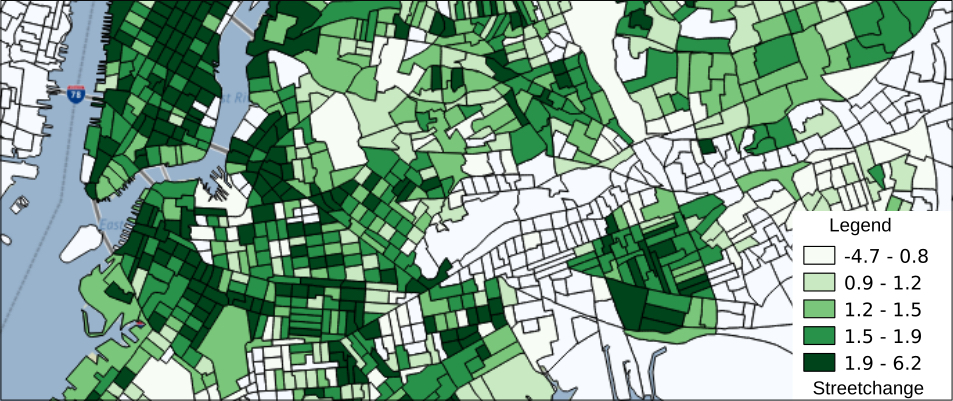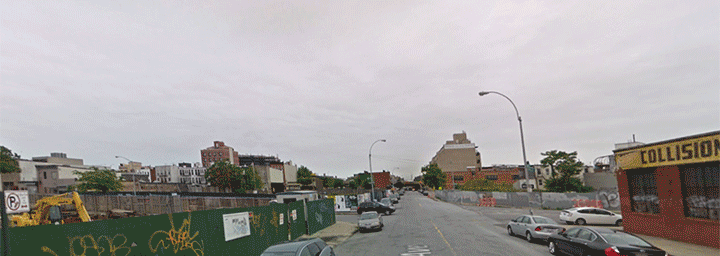“Man, this neighborhood is really changing,” anyone living in any Brooklyn neighborhood for at least six months is saying, constantly.
But a new interactive map and project from an MIT Media Lab group shows that this really is the case. Using computer vision, aka Google Street View, the researchers analyzed how streets and blocks have changed, and gave streets in New York, Baltimore, Boston, Washington, D.C. and Detroit scores on how they have developed or degraded. It’s called Streetchange and its findings were recently published in the Proceedings of the National Academy of Sciences.
“Physical urban change—the evolution of cities’ public and private infrastructure—has been of interest to policymakers, as well as scholars in economics, sociology, and urban planning for decades,” the group writes. “However, it has been difficult to measure urban change in ways that are quantitative, robust, and scalable. In the present work, we developed a computer vision method that allows us to quantify urban change at high spatial resolutions using image time-series from Google Street View. We used this method to compute urban change for more than 1.5 million street blocks from five major American cities.”

In Brooklyn, the team finds levels of change are more or less steady throughout the borough, but with a concentration of development in Williamsburg.
It also finds high levels of streetchange in Midwood and Canarsie. Industrial areas like East Williamsburg and Bushwick and residential neighborhoods like Dyker Heights saw little streetchange.
Read the report






